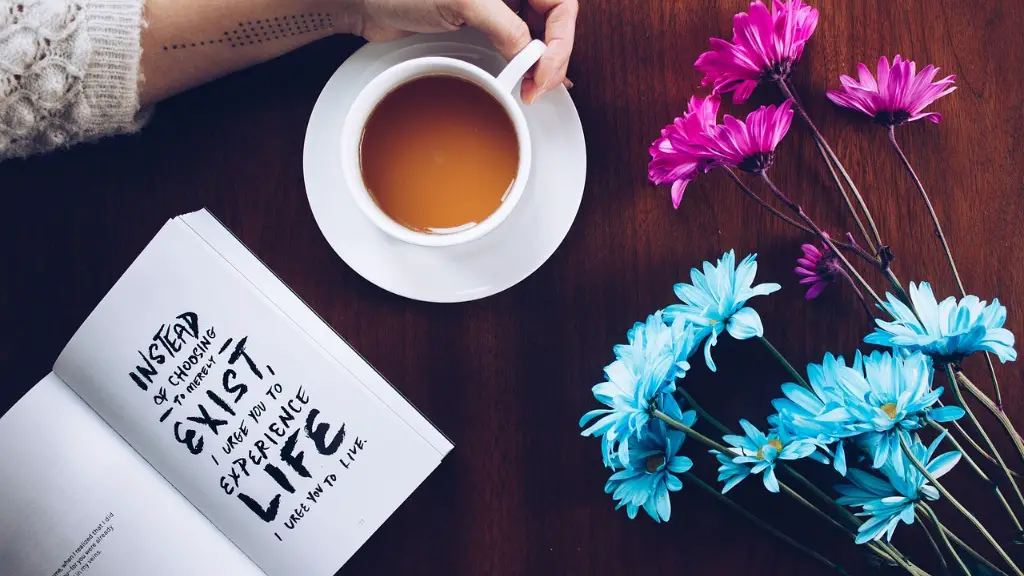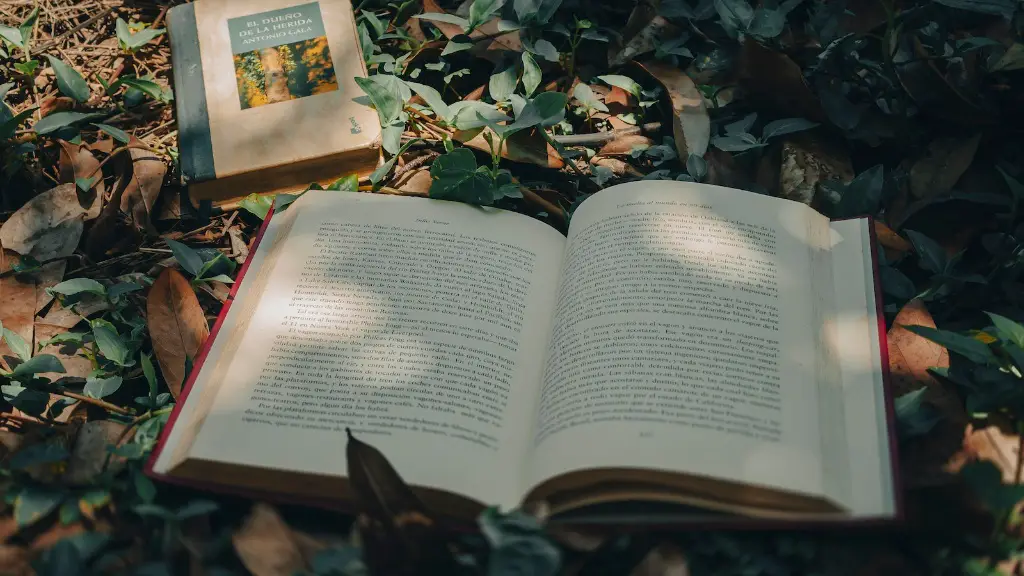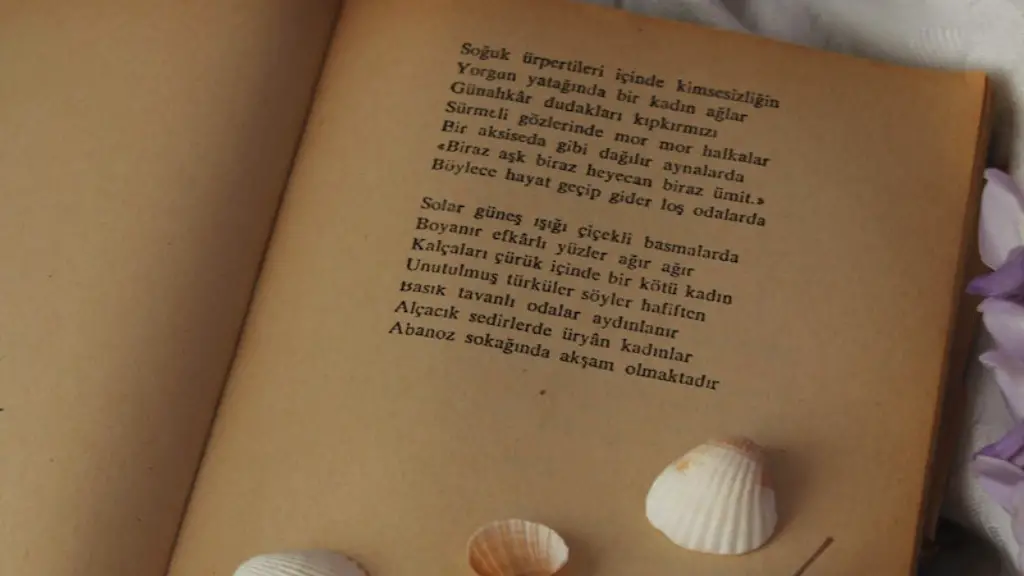What is Chinese Poetry
Chinese poetry has been around for centuries and is considered to be one of the most important art forms in Chinese culture. It is a form of literature which combines both Chinese characters and traditional Chinese aesthetics. Chinese poetry is not only popular amongst the Chinese people, but also around the world. Chinese poetry usually consists of five-character or seven-character lines, which are structured in order to create an overall poetic effect. Many traditional Chinese poets are known for their intelligence, creativity and eloquence in their works and the beauty of their poetry has been passed down through the generations.
History of Chinese Poetry
Chinese poetry has been around for thousands of years and began during the Ancient Chinese period. During this time, poetry and musical compositions were used to express thoughts, feelings and ideas. During the Eastern Han Dynasty, two famous poets, Cao Zhi and Tao Yuanming, created renowned pieces which people still talk about to this day. As Chinese culture and language developed further, different styles and forms of poetry were created. Every dynasty had different types of poetry and a different perspective on the art form, making Chinese poetry extremely diverse.
How to Read Chinese Poetry
Reading Chinese poetry can be difficult, especially for those who are not native Chinese speakers. However, with a bit of practice and patience, anyone can learn to read and appreciate Chinese poetry. It is important to understand the structure and formatting of the poem, as this helps to reveal the poet’s meaning, as well as the key messages of the poem. The most common type of Chinese poetry is the five-character verse (wu wei), which is generally composed of five characters, arranged in two alternating lines. It is important to remember that each character has its own meaning and this is often the key to understanding the poem. Additionally, the tone and rhythm of the poem should also be taken into consideration.
Helpful Tips for Reading Chinese Poetry
In order to fully appreciate a Chinese poem, it is essential to bring the poem to life. Here are some helpful tips for understanding and interpreting Chinese poetry:
- Read the entire poem in Chinese before reading it in translation.
- Read aloud to get a better feel for the poem.
- Analyse the structure and combinations of characters.
- Pay attention to the author’s literary devices and figures of speech.
- Allow the poem to become its own world.
- Imagine what images the poet was suggesting.
- Discuss the poem with others and share your interpretations.
Internet Resources to Help Learn Chinese Poetry
Learning Chinese poetry can be made easier with the help of the internet. There are a number of websites which are available to help make understanding Chinese poetry easier. Many of these websites offer a range of activities, lessons and even discussion forums to help readers gain a more comprehensive understanding of Chinese poetry. Here are some of the best online websites for learning Chinese poetry:
- Mandarin Companion Chinese Poetry
- Chinese Poems
- Chinese Characters
- Chinese Poetry YouTube Channel
- Chinese Poetry Amazon Book
Appreciating Chinese Poetry
Once you have a better understanding of Chinese poetry, it is time to start appreciating it. As the old saying goes, “a poem without understanding is a fable without teaching”. Chinese poetry is like any other art form; it needs to be analysed, pondered and appreciated. Each poem is a representation of the poet’s feelings, thoughts and observations, so try to immerse yourself in the world of Chinese poetry.
Exploring Different Types of Chinese Poetry
Chinese poetry comes in a variety of forms, so it is important to explore different types in order to gain a better understanding of the art form. These include:
- Fu (Narrative Poetry), which is a highly wrought poem, traditionally written in seven-character lines.
- Jueju (Cutting Verse), which consists of four lines of five characters each.
- Ci (lyrics), which consists of multiple lines of seven characters each, usually full of emotion.
- Yuefu (Music Bureau), which is a type of descriptive poetry which focuses on everyday life.
- Xiaoxiang (Lesser River), which is a type of poem which focuses on the beauty of everyday life.
Exploring the Imagery of Chinese Poetry
Imagery is an important aspect of Chinese poetry and it is important to investigate the images used. Common imagery in Chinese poetry includes nature, nature metaphors and rural life. The poet often uses beautiful images to represent ideas and emotions. Many traditional Chinese poets have been known to use vivid and descriptive imagery, so it is important to pay attention to the language used and the images conveyed in order to fully appreciate the poem.
Analysing Chinese Poetry
The key to appreciating Chinese poetry is to analyse the poem on a deeper level. Analyse the characters and symbols used in the poem and try to understand their meanings. Pay attention to the structure and the flow of the poem; look for patterns and themes. Additionally, it is important to consider the overall message or emotion of the poem as well as how it makes you feel.
Comparing Chinese Poetry vs Western Poetry
Chinese poetry is very different from Western poetry, both in terms of structure and meaning. While both use language to express emotion and ideas, the structure of Chinese poetry is much more flexible. The main difference however is in the way the poet conveys his or her message. Chinese poetry is often much more metaphorical and subtle, while Western poetry is more direct and subject to personal interpretation.
Influencers of Chinese Poetry
Chinese poetry has been influenced by a variety of factors, such as climate, geography, philosophy and history. Ancient Chinese poets used symbols and metaphors to convey their messages, often in response to their current political and social circumstances. Additionally, there has been a long history of influence between Chinese and Japanese poetry, as well as the influence of Western culture and literature on Chinese poetry.
Summarising Chinese Poetry
Chinese poetry is a beautiful form of art which has been around for centuries and has been appreciated by many throughout its history. It is important to understand the structure and formatting of the poem in order to gain a comprehensive understanding of the poet’s intention and message. In order to appreciate Chinese poetry, be sure to explore different types, familiarise yourself with the language and imagery, and analyse the poem on a deeper level. Additionally, be sure to compare Chinese poetry to Western poetry to gain a more comprehensive understanding of the art form.



